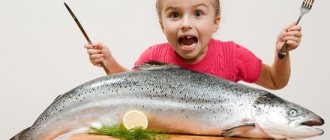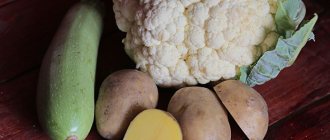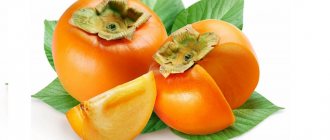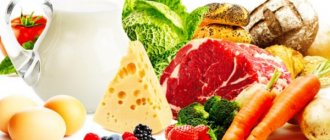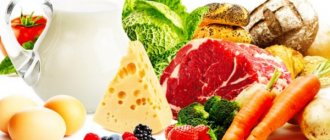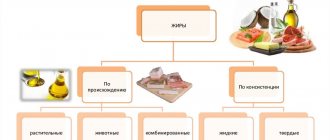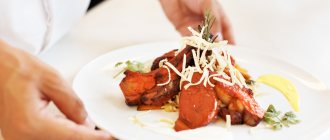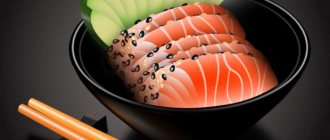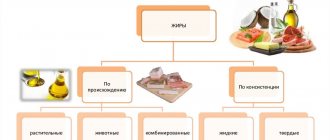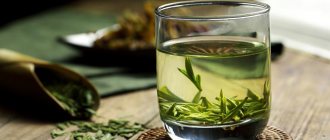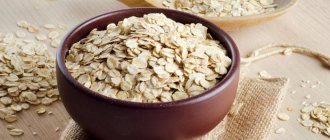Do you want to get rid of excess body weight or go to the gym every day and need a balanced diet? Compose your diet from foods that can provide the body with the necessary energy. But it’s worth choosing food that won’t fill you with excess calories. The idea that without vegetable and animal fats the taste of dishes deteriorates is false. In fact, fats perform a number of functions, which ensures the normal functioning of literally the entire body. But you shouldn't abuse them. In this article we will look at which fat-free foods will bring you the most benefit.
What do I need to know about the different types of fat in food?
- Limit unhealthy fats. A diet high in cholesterol, saturated fat and trans fat can cause unhealthy cholesterol levels. Unhealthy cholesterol levels increase the risk of heart disease. Cholesterol: Limit cholesterol intake to 200 mg per day. Cholesterol is found in meat, eggs and dairy products.
- Saturated fat: Limit saturated fat to less than 7% of your daily calories. Ask your dietitian how many calories you need each day. Saturated fat is found in butter, cheese, ice cream, whole milk and palm oil. Saturated fat is also found in meats such as beef, pork, chicken skins and processed meats. Processed meats include sausage, hot dogs and bologna.
- Trans fats: Avoid trans fats as much as possible. Trans fats are used in fried and baked foods. Products labeled as fat-free may contain up to 0.5 grams of fat per serving.
- Monounsaturated fats. They are found in avocados, nuts and vegetable oils such as olive, canola and sunflower oil.
Which diet should you choose?
Let's start with the fact that there is no special diet based on the consumption of fat-free foods. Constant consumption of foods with a minimum amount of calories is considered the most effective method of losing extra pounds in a short period of time. But it is impossible to maintain such a diet for a long time - the lack of fat has a detrimental effect on the health of both women and men.
What foods should I limit or avoid?
- Grains: Snacks made from partially hydrogenated oils, such as chips, regular crackers, and butter-flavored popcorn
- High-fat baked goods such as cookies, croissants, donuts, pies, cookies and pastries
- Whole milk, 2% milk, yogurt and whole milk ice cream
- High-fat cuts of meat (t-bone steak, regular hamburger, and ribs)
- Roasted vegetables or vegetables in creamy or rich sauces such as cream or cheese sauces
- Butter, margarine
Healthy vegetables
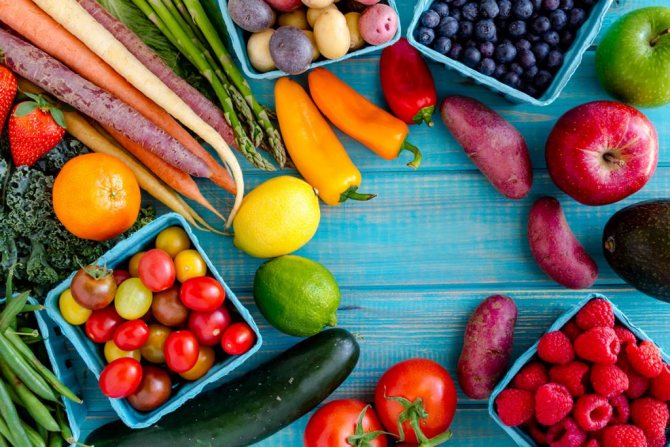
A healthy diet is based on eating vegetable dishes. Nutritionists allow you to eat them in almost unlimited quantities without fear of gaining extra pounds. The exception is potatoes. Due to the high concentration of starch in its composition, potatoes contribute to weight gain.
All types of vegetables contain no more than 1 gram of fat per 100 grams of product. Boiled or steamed vegetables are a healthy side dish for literally any dish. List of the healthiest foods without animal fat:
- Carrot.
- Spinach.
- Pumpkin.
- Onion.
- Broccoli).
- Lettuce leaves.
- Celery.
- Tomatoes.
- Watermelon.
What products should we include?
- Grains: Whole grain breads, cereals, pasta and brown rice
- Fat crackers and pretzels
- Fresh, frozen or canned vegetables (unsalted or low sodium)
- Skim (skim) or 1% milk
- Chicken or turkey without skin
- Unsaturated oil such as canola, olive, peanut, soybean or sunflower oil
Mushrooms
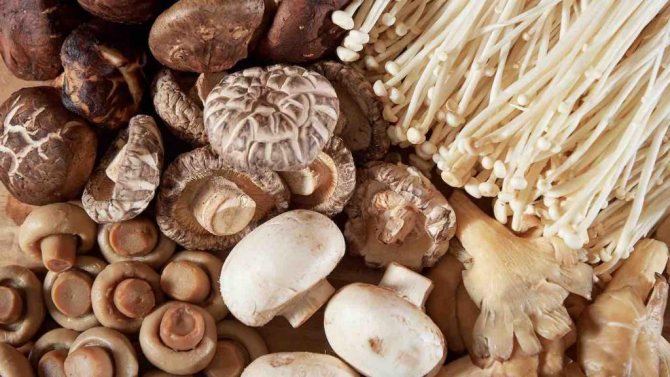
Many diets include the use of mushrooms as an alternative to meat. Due to the low fat content in mushrooms, they are a very low-calorie product. There are 20–40 kcal per 100 grams. In addition, a small portion of mushrooms nourishes the body and eliminates the feeling of hunger.
Mushroom dishes allow you to get rid of excess weight without “breakdowns” and frequent mood swings. The main problem with such a diet is poor quality and harmful mushrooms, the use of which leads to unpredictable results, for example, poisoning.
How can you reduce fatty foods?
- Read food labels before purchasing food. Choose foods that contain less than 30% of your calories from fat. Choose low-fat or low-fat dairy products. Remember that low fat does not mean no calories. These foods still contain calories, and too many calories can lead to weight gain.
- Trim fat from meat and avoid fried foods. Remove all visible fat from meat before cooking it. Remove skin from poultry. Do not fry meat, fish or poultry. Instead, bake, broil, boil or broil these foods. Avoid fried foods. Eat baked potatoes instead of French fries. Steam vegetables instead of frying them in butter.
- Add less fat to your food. Use imitation bacon bits on salads and baked potatoes instead of regular bacon bits. Use low-fat or low-fat salad dressing instead of regular dressing. Use low-fat or butter-flavored butter instead of regular butter or margarine on popcorn and other foods.
Cereals
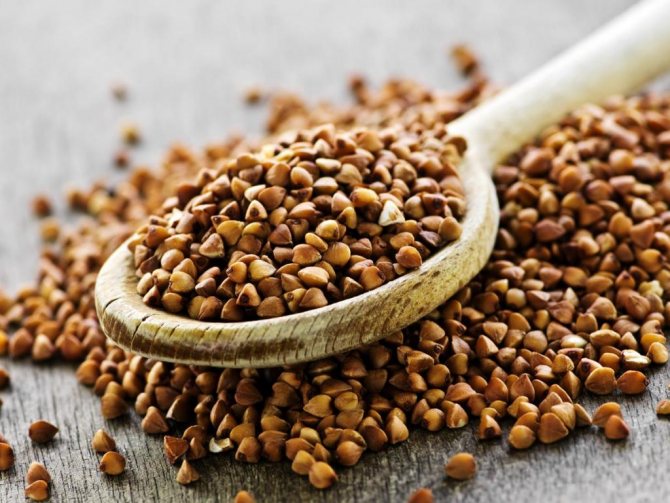
Buckwheat, oatmeal, millet, brown rice and other cereals are indispensable elements of the diet menu for those who dream of a sculpted body.
The fat content in cereals is low (from 1 to 2%). The most high-calorie cereal is made from oats, since the amount of fat in it is up to 6%. These products contain large quantities of complex carbohydrates, which add strength and energy during constant physical activity. When you eat porridge in the morning and at lunch, the feeling of hunger goes away for a long time.
How can I reduce fat in recipes?
Substitute fatty or low-fat ingredients. This may make baked goods drier than usual. You may need to use a low-fat spread for cooking on pans to prevent food from sticking. You may also need to adjust the amount of other ingredients, such as water, in the recipe. Try this:
- Use low-fat or light margarine instead of regular margarine or spread
- Use lean turkey or chicken breast or lean ground beef (less than 5% fat) instead of hamburger.
- Add 1 teaspoon of canola oil to 8 ounces of skim milk instead of using cream or half and half.
- Use shredded zucchini, carrots or apples in your bread instead of coconut.
- Instead of cream cheese, use low-fat cottage cheese, regular tofu, or low-fat ricotta cheese.
- Use 1 egg white and 1 teaspoon olive oil, or ¼ cup low-fat egg substitute instead of a whole egg.
- Substitute half the butter called for in the recipe with applesauce when you bake. Use 3 tablespoons cocoa powder and 1 tablespoon olive oil instead of the baking chocolate square.
Meat
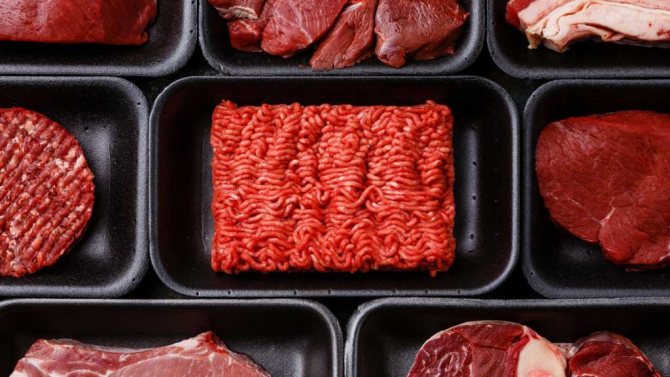
First, pay attention to the meat. The basis of the diet is chicken breast and veal, which contain a large amount of healthy protein, which is well accepted by the body. Nutritionists advise eating rabbit as a substitute for fatty meats. Rabbit meat is considered healthy because it contains vitamins B1, B2, B4, B6, B12, PP, K, cobalt, phosphorus, iron, etc.
How can I increase my fiber?
Eat enough high-fiber foods to get 20 to 30 grams of fiber each day. Slowly increase your fiber intake to avoid stomach cramps, gas and other problems.
- Eat 3 servings of whole grains every day. Eat whole grain breads, such as whole wheat bread. Whole wheat, whole wheat flour, or other whole grains must be listed as the first ingredient on the food label. Replace white flour with whole wheat flour or use half of each in recipes. Whole wheat flour is heavier than white flour, so you may need to add more yeast or baking powder.
- Eat high fiber cereal for breakfast. Oatmeal is a good source of soluble fiber. Look for grains that have bran or fiber in their name. Choose whole grain foods such as brown rice, barley and whole wheat pasta.
- Eat more beans, peas and lentils. For example, add beans to soups or salads. Eat at least 5 cups of fruits and vegetables every day. Eat fruits and vegetables with the skin on because the skin is high in fiber.
Fruits
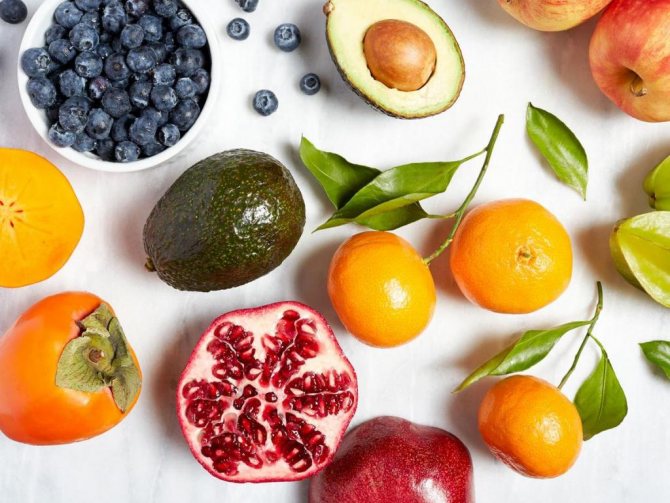
Fruits also appear in the group of foods with the least amount of fat, except for avocados and olives. Frequent consumption of fruits in the first half of the day helps not only to cope with fat deposits, but also prevents weight gain. Just remember that fruits contain a lot of sugar.
List of fat-free foods (fruits):
- Oranges.
- Grapefruits.
- Bananas.
- Apples.
- Apricots.
- A pineapple.
- Cherries.
Products containing harmful and healthy fats
Healthy fats
Healthy fats containing mono- and polyunsaturated fatty acids (Omega-3, Omega-6): vegetable oil, nuts, seeds, avocados, fatty fish. Products containing healthy fats help reduce the level of “bad” cholesterol, prevent strokes and heart attacks, help with arthritis and arthrosis, improve the condition of skin and hair, help with recovery from injuries, and are involved in the production of hormones (including testosterone, which is so necessary for involved in sports). Saturated fats (butter, fatty meat, milk and cottage cheese) are also healthy, but within the daily norm.
If you reduce fats to a minimum in your diet, you will lose weight more slowly, and health problems will also appear (in particular, girls’ menstrual cycle may be disrupted, and for men, this is not only a lack of energy during training, but also a decrease in libido).
Foods containing healthy fats
| Food product | Fats, g (per 100g of product), g |
| Oils (butter, vegetable) | more than 80 |
| Nuts (peanuts, walnuts, almonds, hazelnuts, seeds) | from 40 to 80 |
| Cheese, full-fat sour cream (more than 20%), ducks, geese, eel | from 20 to 40 |
| Salmon, herring, mackerel, caviar, avocado (fruit) | from 10 to 19 |
| Milk, kefir, cottage cheese (4-9%), pink salmon, mackerel, tuna | from 3 to 9 |
Bad fats
Bad fats are all trans fats and excess saturated fats. Trans fats are margarine, fried foods (french fries, etc.), store-bought baked goods (snacks, pizza, chips, etc.) Harm from foods containing trans fats: heart and vascular diseases, type 2 diabetes , chronic inflammation, obesity, possibly cancer. All trans fats are harmful. Eating them is like building your house out of bricks that are hollow inside. Also our body - the building material for it must be reliable.
Saturated fats are fatty meats, chicken skins, full-fat milk and cream, butter, etc. These fats themselves are not harmful and must be included in the diet (7-10% of daily calories). But if you eat too much saturated fat, then your overall caloric intake will be higher than normal. The result is excess weight, and the extreme case is obesity and associated health problems.
Semolina porridge and more
Alexander Myasnikov debunked myths about “deceptive products” together with the audience. The doctor found out what people thought about hematogen, semolina porridge and curd desserts, after which he explained: all of the listed products are useless or even harmful. And that's why.
- Hematogen. “It's delicious. And if it’s tasty, it means it’s harmful. What gives a product its taste? Salt, sugar and fat. There is absolutely nothing in hematogen except sugar and fat. It was originally blood based, but this component was removed around the 50s. All that was left was just toffee,” the doctor shared.
- Curd desserts. Pay attention to the second word - “desserts”. Cottage cheese is a source of calcium, Myasnikov does not argue with this. But curds with fillings contain a lot of sugar and milk fat.
- Semolina. “Remember what I often say? Don't eat anything white because it's refined. What is in semolina porridge? Nothing. Starch and calories. There is zero benefit, as much harm as you like. You eat a spoonful of porridge and your sugar level immediately jumps.” Instead of semolina, Alexander Leonidovich advises having breakfast with buckwheat or oatmeal.
However, you shouldn’t be categorical and say goodbye to mushrooms, breakfast cereals, boiled and even fried potatoes. After all, the benefits of food are measured not only by microelements, but also by the pleasure of preparing and eating it. And as Alexander Myasnikov often repeats, “there are simply no harmful or healthy foods, there is a right and wrong way of eating.”
Pasta
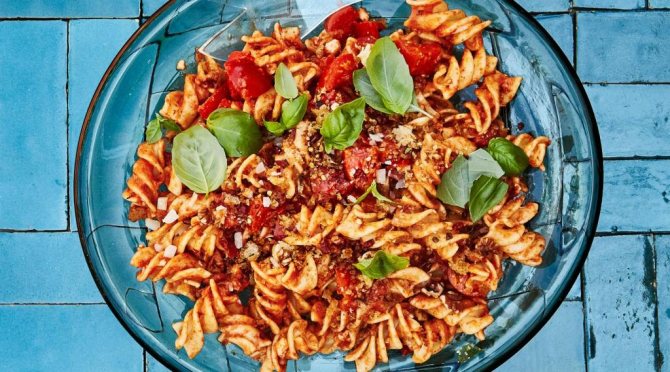
Pasta cannot be called a real dietary product, but the amount of fat in it is about 0.4 grams per 100 grams of product. Italians say that eating pasta does not actually make you gain weight. Pasta lovers gain weight from frequent consumption of fatty sauces, with which pasta is often served. Pasta consists mainly of carbohydrates, and sauces consist of fats. For those who want to lose weight, pasta and sauce should not be combined!
In order to lose a couple of extra pounds, do not deny yourself your favorite foods. The basic rule of healthy eating is not to drink tea/coffee or eat after 6 pm. In fact, it is quite possible to prepare low-fat and tasty pasta with stewed vegetables, mushrooms or with a light sauce without heavy cream.
Tangerines
They improve digestion, contain vitamins, essential oils and antioxidants, promote the absorption of iron, stimulate the cardiovascular system - all this is said about citrus fruits. Oranges, grapefruits and other members of the genus are really healthy - with a couple of caveats. Firstly, it is better to eat the whole fruit than to squeeze juice out of it: the drink loses some of its microelements and oxidizes during the preparation process. There is no need to talk about packaged juices: according to the doctor, they are sugar solutions, and not products valuable for health.
The second nuance is calorie content. 100 grams of tangerines, for example, contain 40 kcal, approximately the same calorie content as beer. This fact does not make citrus fruits harmful - rather, undesirable for those watching their weight. “It really surprised me. I don’t drink beer, I’m afraid of getting fat, but I eat kilograms of tangerines?” - exclaimed the expert.
Potato
Dr. Myasnikov devoted more than one conversation with the audience to foods with a high glycemic index. It’s not difficult to remember unhealthy foods, they are all white: sugar, bread, rice, pasta, potatoes. However, potatoes stand apart on the list - you should not unconditionally remove them from the daily menu.
The product contains potassium, vitamins C and B, phosphorus, magnesium, silicon and other trace elements needed by people with hypertension. However, the root vegetable is useless if you peel it and boil it. “When you peel potatoes, you leave only starch and water, and throw away all the useful substances along with the peel,” reminded Alexander Leonidovich. To turn a harmful product into part of a healthy menu, you need to bake or boil it in its “jacket”. It is best to use young tubers - they have a higher concentration of vitamins and minerals.
